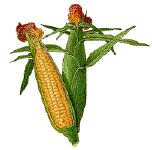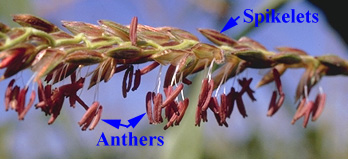The global debate over genetically modified organisms, specifically transgenic crop varieties, shows little evidence of slowing down. Whether you favor transgenic plant breeding or not, the short term effects on market acceptance for transgenic crops in general are impacting corn and soybean farmers directly. You only have to look at the uproar caused by the contamination of last year’s commercial corn and seed corn production by the Cry9C Bt transgene (approved for animal consumption and industrial use but not human consumption) to realize how quickly the global debate can hit home.
As Indiana farmers prepare for the 2001 growing season, what can they expect? Will there be any more unexpected ‘red flags’ regarding the acceptance of currently available transgenic crop varieties? What can farmers do to best minimize the transgenic market risk to their farming operations?
First of all, recognize that NONE of the currently available insect-resistant or herbicide-tolerant corn or soybean varieties are CRITICAL for the success of Indiana farmers.
Because these transgenic crop traits are NOT CRITICAL for the success of Indiana farmers, the choice of whether to grow them or not depends primarily on the farmer’s assessment of the uncertainty of market acceptance for such products and/or the available seed supply of alternative non-transgenic varieties.
What if a farmer elects not to use transgenic crop varieties, but is concerned about the risk of contamination of his/her grain by transgenic grain? In other words, what are the possible means by which one can end up with transgenic grain interspersed with that produced from a non-transgenic variety?
 Seed Supply. Seed producers face the same challenges of
producing pure non-transgenic crop seed as do commercial grain producers.
Consequently, most have been reluctant to assure 100 % ‘pure’ seed
relative to transgene contamination.
Seed Supply. Seed producers face the same challenges of
producing pure non-transgenic crop seed as do commercial grain producers.
Consequently, most have been reluctant to assure 100 % ‘pure’ seed
relative to transgene contamination.
In late December, the USDA strongly recommended that seed companies sample and test all of their 2001 seed corn lots and all seed parent lines for the presence of the Cry9C Bt transgene because of the hue and cry raised last fall with the discovery of this genetic material in corn flour and products made from corn flour. Any seed lot testing positive for Cry9C will be channeled into feed or non-food industrial use. USDA also recommended that seed companies provide the verification information to customers when customers ask for it.
The seed industry has responded to this demand by supposedly testing all seed lots for the presence of the Cry9C Bt transgene. Unfortunately, seed companies cannot guarantee zero presence of Cry9C in any seed lot. The currently available quantitative tests, when used with appropriate sampling intensities, are capable of detecting the presence of the Cry9C protein at the minimum detectable level of no less than about 0.2 % with a 99 % probability.
Every corn grower needs to take reasonable precautions to avoid introducing the Cry9C Bt transgene into the 2001 corn crop. At a minimum, corn farmers should “verify before they buy” and insist on receiving the results from the USDA-recommended seed testing plan for the Cry9C Bt transgene. Ask for the results in writing, keep this documentation for your records, and help to assure the integrity of the 2001 harvest. Additionally, consider saving a sample of seed from each lot of supposed non-transgenic hybrid or variety for purity retesting in the event that you need to re-verify the non-transgenic integrity of a particular seed lot.
At a maximum, ask for written assurances for ANY transgene contamination in any non-transgenic corn or soybean variety. Some companies have taken the extra steps to test for any transgene contamination in their non-transgenic hybrid seed lots and are making this information available to their customers.
Previous crop & variety. Because of the risk of transgenic volunteer corn, any field planted to a transgenic event in 2000 (especially the Cry9C Bt transgene) should not be planted to corn again in 2001. Similarly, be sure to prevent any such volunteer corn in this year’s soybean fields from setting seed.
Planting Operation. Let’s say that a farmer has obtained a ‘pure’ supply of non-transgenic seed corn or soybean, but will also be planting some transgenic varieties in 2001. Obviously, then, there will be some potential for seed contamination during the planting operation. The best advice here is to plant the non-transgenic seed lots first, followed by the transgenic varieties. In this way, any seed carrying over from one seed lot to another in the planter will be from non-transgenic to transgenic and not the other direction.
 Pollen
Drift Control. Corn is a cross-pollinating plant species, meaning
that pollen freely moves with the wind throughout a corn field and, to a
limited degree, outside of the field during the active
pollination period. While recent research on the extent of
pollen drift strongly suggests that the majority of corn pollen from a field
lands within a very short distance from the field, some small percent of pollen
will travel a quarter of a mile or further and still be viable. Consequently,
pollen drift represents a means of transgene contamination for farmers growing
non-transgenic hybrids adjacent to fields of transgenic hybrids.
Pollen
Drift Control. Corn is a cross-pollinating plant species, meaning
that pollen freely moves with the wind throughout a corn field and, to a
limited degree, outside of the field during the active
pollination period. While recent research on the extent of
pollen drift strongly suggests that the majority of corn pollen from a field
lands within a very short distance from the field, some small percent of pollen
will travel a quarter of a mile or further and still be viable. Consequently,
pollen drift represents a means of transgene contamination for farmers growing
non-transgenic hybrids adjacent to fields of transgenic hybrids.
Communication with neighbors is an important aspect of pollen drift awareness. Farmers should find out what corn hybrids will be planted adjacent to their fields of non-transgenic corn, and document the hybrid seed lot information and planting dates. In Indiana, the risk of pollen drift is greatest from fields of corn planted to the southwest of the field in question because of the direction of the prevailing winds in mid-summer. Taking the time to note the dates of pollen shed in your field and adjacent fields will help you determine the relative risk of pollen drift.
The risk of pollen drift from neighboring transgenic corn fields may require the harvesting and segregation of a certain amount of corn around the perimeters of a non-transgenic field, certainly no less than 660 feet from the field edge. Corn harvested from those buffer strips should be fed on the farm, or channeled to elevators willing to accept transgenic corn.
Harvest Operation. Combines should be
super cleaned prior to the start of grain harvest to minimize the risk of any
leftover grain from 2000 in the machine. If non-transgenic and transgenic
varieties are grown on the same farm, then the sequence of harvesting those
fields should follow the FIF-FOF (First-In-Field, First-Off-Field) principle.
This means that non-transgenic varieties
planted in the field first should be harvested before transgenic ones to avoid
transgenic grain commingling with non-transgenic grain from the nooks and
crannies of the combine.
Handling, Storage & Transport. All grain transport vehicles (trucks, wagons, trailers, grain carts), all grain handling equipment (augers, legs, pits, wet holding bins, dryers) and all grain storage facilities should be super cleaned prior to the start of grain harvest. By following the FIF-FOF principle during harvesting, the post-harvest operations will benefit because non-transgenic varieties can be received, dried and transferred to storage ahead of transgenic varieties. Obviously, transgenic and non-transgenic grain should be stored separately on-farm to avoid grain commingling, and to take advantage of potential premiums for identity-preserved grains in the market place.
Assuming that transgenic grain was put into storage last, then emptying storage facilities for transport to market should begin with the transgenic grain in order to avoid an extra cleaning step, and thus, reduce the chance of contamination. However, given that this strategy will depend on a farmer’s marketing plan, all grain transport vehicles and grain handling equipment should be super cleaned prior to every time that non-transgenic grain load-out follows transgenic load-out in order to avoid commingling of grain leftover from the previous handling operation.
American Seed Trade Association. December 2000a. Grain Handlers Database. On the Web at: http://asta.farmprogress.com/ .
American Seed Trade Association. December 2000b. USDA Calls for Testing Seed Corn for Presence of StarLink™ (Cry9C Protein). On the Web at: http://www.amseed.com/newsupdate/asta_special_news_122900.html.
Corn Refiners Assoc. 8 March 2001. Protecting the 2001 Corn Crop from Cry9C Protein. A Joint statement issued by the Corn Refiners Association, North American Millers’ Association, North American Export Grain Association, and National Grain and Feed Association. On the Web at: http://www.corn.org/web/rels0301cry9c.htm
Harl, Neil E., Roger G. Ginder , Charles R. Hurburgh and Steve Moline. 2001. The StarLink Situation. Iowa State Univ. On the Web at: http://www.exnet.iastate.edu/Pages/grain/publications/buspub/0010star.PDF
Hyde, Jeffrey, Marshall A. Martin, Paul V. Preckel, and C. Richard Edwards. 1998. The Economics of Bt Corn: Adoption Implications. Purdue Univ. Cooperative Extension Service. Publication ID-219. On the Web at: http://www.agcom.purdue.edu/AgCom/Pubs/ID/ID-219.pdf.
Monsanto Company. 2000. Grain Channeling Information. On the Web at: http://www.farmsource.com/Product_Info/GrainChannel.html
USDA - Grain Inspection, Packers and Stockyards Administration. 2000a. Letter sent by USDA to seed companies, December 27, 2000. On the Web at: http://www.usda.gov/gipsa/biotech/starlink/122700seedletter.htm
USDA - Grain Inspection, Packers and Stockyards Administration. 2000b. GIPSA StarLink™ (Cry9C) Testing Program. On the Web at: http://www.usda.gov/gipsa/biotech/starlink/starlink.htm
USDA - Grain Inspection, Packers and Stockyards Administration. 2000c. Sampling and Testing Recommendations for the Detection of Cry9C Protein in Hybrid Seed Corn. On the Web at: http://www.usda.gov/gipsa/biotech/starlink/cry9cdetection.htm
 For other
information about corn, take a look at the Corn Growers Guidebook on the World
Wide Web at http://www.kingcorn.org
For other
information about corn, take a look at the Corn Growers Guidebook on the World
Wide Web at http://www.kingcorn.org